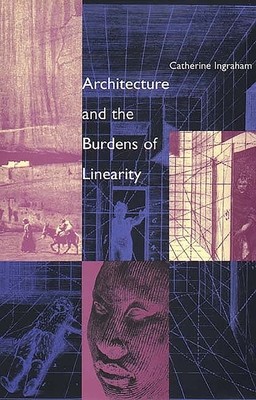
- We will send in 10–14 business days.
- Author: Catherine Ingraham
- Publisher: Yale University Press
- ISBN-10: 0300071191
- ISBN-13: 9780300071191
- Format: 16.2 x 26.1 x 2 cm, hardcover
- Language: English
- SAVE -10% with code: EXTRA
Reviews
Description
In this suggestive inquiry into the operations of linearity in architectural theory and practice, Catherine Ingraham investigates the line as both a conceptual and literal force in architecture. She approaches her subject from philosophical, theoretical, practical, and historical points of view, finding the following points of convergence: architecture's relation to property, politics, and economy; architecture's relation to propriety and the need to keep things "in line"; and architecture's relation to the proper name, human identity, object identity, and spatial location and demarcation. In this engaging discussion, Ingraham considers maps, architectural plans, the laws of geometry, systems of architectural knowledge, and mythologies of architectural origin in work by Le Corbusier, Vitruvius, Alberti, Tafuri, Derrida, Lévi-Strauss, Shakespeare, Lacan, Deleuze, Rilke, and Stendhal. Entering the current complex debates about the relation between theory and practice in architecture, the author also addresses themes in psychoanalytic criticism, poststructural theory, and feminist criticism. Her examination thus moves beyond architecture and its literal structures to the notion of epistemological structure that architecture as a discipline and practice upholds and promotes.
EXTRA 10 % discount with code: EXTRA
The promotion ends in 17d.03:18:05
The discount code is valid when purchasing from 10 €. Discounts do not stack.
- Author: Catherine Ingraham
- Publisher: Yale University Press
- ISBN-10: 0300071191
- ISBN-13: 9780300071191
- Format: 16.2 x 26.1 x 2 cm, hardcover
- Language: English English
In this suggestive inquiry into the operations of linearity in architectural theory and practice, Catherine Ingraham investigates the line as both a conceptual and literal force in architecture. She approaches her subject from philosophical, theoretical, practical, and historical points of view, finding the following points of convergence: architecture's relation to property, politics, and economy; architecture's relation to propriety and the need to keep things "in line"; and architecture's relation to the proper name, human identity, object identity, and spatial location and demarcation. In this engaging discussion, Ingraham considers maps, architectural plans, the laws of geometry, systems of architectural knowledge, and mythologies of architectural origin in work by Le Corbusier, Vitruvius, Alberti, Tafuri, Derrida, Lévi-Strauss, Shakespeare, Lacan, Deleuze, Rilke, and Stendhal. Entering the current complex debates about the relation between theory and practice in architecture, the author also addresses themes in psychoanalytic criticism, poststructural theory, and feminist criticism. Her examination thus moves beyond architecture and its literal structures to the notion of epistemological structure that architecture as a discipline and practice upholds and promotes.


Reviews